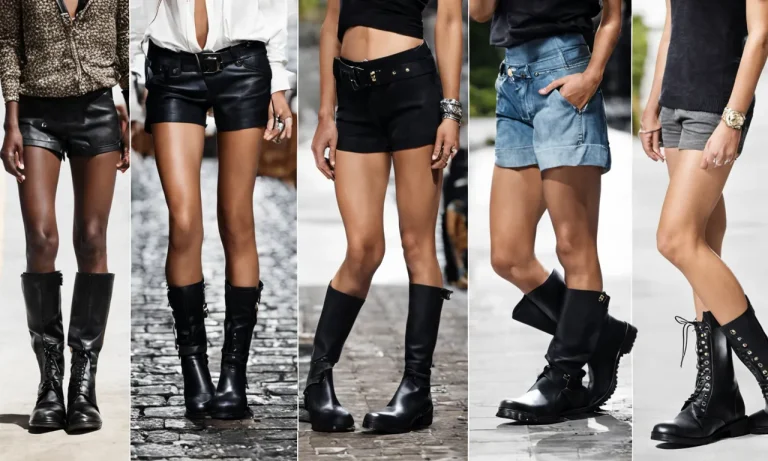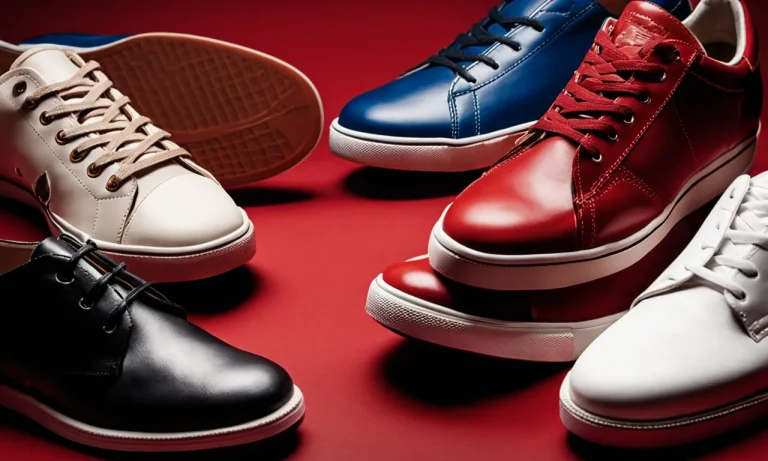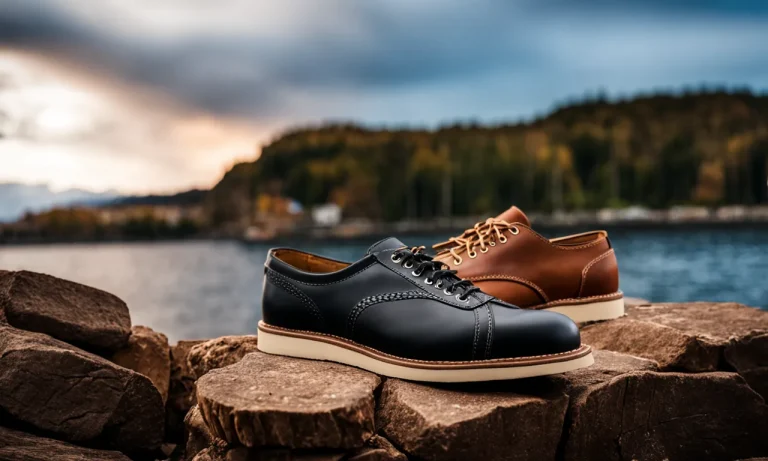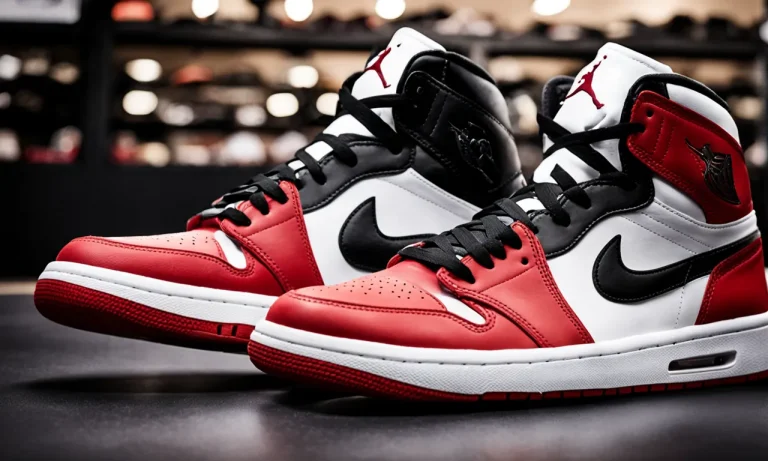Croc boots have become an iconic fashion statement, loved for their comfort and versatility. But with their distinctive holes and ventilation, many wonder – can you actually wear Croc boots in wet weather or out in the snow?
In this comprehensive guide, we’ll give you the complete lowdown on whether Croc boots are waterproof.
If you’re short on time, here’s a quick answer: Croc boots are not fully waterproof, but certain styles offer decent weather resistance that works for light rain and snow. Their water resistance also depends on the material used.
The Short Answer: Are Crocs Waterproof?
When it comes to the question of whether Crocs are waterproof, the short answer is no. Crocs are not fully waterproof due to their signature ventilation holes, which allow air to circulate and keep your feet cool and comfortable.
These holes also make it possible for water to enter the shoes, which means they are not completely impervious to water.
Certain ‘Croc’ styles like rain boots & winter boots have enhanced water resistance
While traditional Crocs may not be waterproof, there are certain styles specifically designed for wet conditions that offer enhanced water resistance. Crocs offers a range of rain boots and winter boots that are made with materials and design features to keep your feet dry in wet weather.
These styles often have a more closed-toe design and additional layers of water-resistant materials to provide better protection against water.
The closed-toe boots are more water-resistant than open-toed Crocs
If you’re looking for Crocs that are more water-resistant, it’s advisable to choose closed-toe styles rather than open-toed ones. The closed-toe design provides an extra layer of protection against water, reducing the chances of water seeping into the shoes.
While they may not be completely waterproof, closed-toe Crocs can withstand light splashes and wet conditions better than their open-toed counterparts.
Treating them with a waterproofer can help with light weather protection
If you want to enhance the water resistance of your Crocs, treating them with a waterproofer can provide some level of protection against light weather conditions. There are various water-repellent sprays and products available that can be applied to the shoes to create a barrier against water.
However, it’s important to note that these treatments are not a foolproof solution and may need to be reapplied periodically.
While Crocs may not be completely waterproof, it’s worth considering their other advantages such as comfort, breathability, and versatility. They are ideal for casual wear, gardening, and beach activities where you don’t need complete water protection.
Additionally, Crocs are easily washable and quick-drying, making them a convenient footwear option for various situations.
Examining Crocs’ Water Resistance by Style
Crocs Classic Clogs: Not Waterproof
The iconic Crocs Classic Clogs are loved by many for their comfort and versatility. However, when it comes to water resistance, these clogs are not waterproof. They are made from a unique foam material called Croslite™, which is water-resistant to a certain extent.
This means that while they can handle a splash or two, they are not designed to keep your feet completely dry in wet conditions.
It’s important to note that the ventilation holes on the Classic Clogs also allow water to enter. So, if you plan on wearing them in rainy or wet environments, be prepared for your feet to get wet. However, the good news is that they dry quickly, thanks to the breathable nature of the material.
Crocs Lined Boots: Water-Resistant
If you’re looking for a Crocs style that offers more water resistance, the Crocs Lined Boots are a great option. These boots feature a water-resistant exterior and a cozy lining to keep your feet warm and dry in mild wet conditions.
The water-resistant feature of these boots is achieved through the use of durable materials and a special treatment that repels water. While they may not be completely waterproof, they provide a higher level of protection against water compared to the Classic Clogs.
So, if you’re going for a walk in light rain or snow, these boots will keep your feet comfortable and dry.
Crocs Rain Boots: Waterproof
When it comes to facing heavy rain or puddles, the Crocs Rain Boots are the way to go. These boots are specifically designed to be waterproof, keeping your feet dry even in the wettest conditions.
The Crocs Rain Boots are made from a durable rubber material that forms a protective barrier against water. They feature a tall shaft that provides additional coverage and helps prevent water from entering the boots.
Whether you’re walking through a downpour or jumping in puddles, these boots will keep your feet dry and protected.
Crocs Winter & Snow Boots: Water-Resistant
For those chilly winter days when you want to keep your feet warm and dry, the Crocs Winter & Snow Boots are a great choice. These boots offer water resistance, making them suitable for light snow and slushy conditions.
The water-resistant feature of these boots is achieved through a combination of materials and construction. They are designed to repel water and keep your feet dry, while also providing insulation to keep your feet warm in cold temperatures.
So, to summarize:
- The Crocs Classic Clogs are not waterproof but are water-resistant to some extent.
- The Crocs Lined Boots offer a higher level of water resistance compared to the Classic Clogs.
- The Crocs Rain Boots are specifically designed to be waterproof and provide the highest level of water protection.
- The Crocs Winter & Snow Boots are water-resistant and suitable for light snow and slushy conditions.
Remember, it’s always a good idea to check the product descriptions and specifications when purchasing Crocs to ensure you choose the right style for your specific needs. Stay dry and comfortable with the right pair of Crocs for the occasion!
How to Waterproof Your Crocs Boots
Use a Waterproof Spray Treatment
If you want to ensure that your Crocs boots are completely waterproof, using a waterproof spray treatment is a great option. These sprays are specially formulated to create a protective barrier on the surface of the boots, preventing water from seeping in.
Before applying the spray, make sure to clean your boots thoroughly and let them dry completely. Then, simply follow the instructions on the spray bottle to evenly coat the boots. Once the spray has dried, your Crocs boots will be ready to take on any wet conditions with ease.
Seal the Holes with Waterproof Tape
Crocs boots are known for their comfortable design, which includes small holes on the upper part of the shoe. While these holes are great for breathability, they can also allow water to enter. To prevent this, you can use waterproof tape to seal the holes.
Simply cover each hole with a small piece of waterproof tape, ensuring that it is securely in place. This will help to keep your feet dry even in the rainiest of weather.
Add Water-Resistant Insoles
In addition to using a waterproof spray and sealing the holes, adding water-resistant insoles to your Crocs boots can provide an extra layer of protection. These insoles are designed to repel water and keep your feet dry.
They are easy to insert into your boots and can make a significant difference in terms of comfort and waterproofing. Look for insoles made from water-resistant materials such as neoprene or rubber for the best results.
By following these simple steps, you can ensure that your Crocs boots are waterproof and ready to tackle any wet conditions. Remember to regularly reapply the waterproof spray treatment and check the integrity of the waterproof tape to maintain the effectiveness of these waterproofing methods.
Now you can enjoy the comfort and style of your Crocs boots without worrying about getting your feet wet!
Tips for Keeping Feet Dry in Crocs Boots
While Crocs boots are known for their comfort and versatility, many people wonder if they are truly waterproof. Here are some tips to help you keep your feet dry when wearing Croc boots:
Wear Higher, Closed-Toe Styles
When it comes to keeping your feet dry in Croc boots, opting for higher, closed-toe styles is a wise choice. These styles provide more coverage and protection, preventing water from seeping into your shoes. The closed-toe design also helps to keep your toes dry in wet conditions.
Use Thick, Moisture Wicking Socks
Pairing your Croc boots with thick, moisture-wicking socks can make a significant difference in keeping your feet dry. These types of socks are designed to pull moisture away from your skin, keeping your feet comfortable and dry even in damp conditions.
Look for socks made from materials such as merino wool or synthetic blends.
Bring Extra Socks To Change Into
It’s always a good idea to pack an extra pair of socks when wearing Croc boots, especially if you anticipate being in wet or rainy conditions for an extended period. If your feet do get wet, changing into dry socks can help prevent discomfort and potential issues such as blisters.
Limit Wear In Heavy Rain or Snow
While Croc boots are water-resistant, they may not be completely waterproof in heavy rain or snow. It’s best to limit wearing them in these conditions to avoid getting your feet wet. Instead, opt for more weatherproof footwear specifically designed for these types of conditions.
Remember, while these tips can help keep your feet dry in Croc boots, it’s important to note that no footwear is completely immune to water. It’s always a good idea to use your best judgment and be prepared for unexpected weather conditions.
Conclusion
While core Crocs clog styles aren’t good for wet conditions, Crocs boots do provide decent weather resistance you can rely on for light precipitation and cold climates. With a few extra waterproofing tricks, Crocs boots can work great as casual, comfortable footwear for all seasons.






